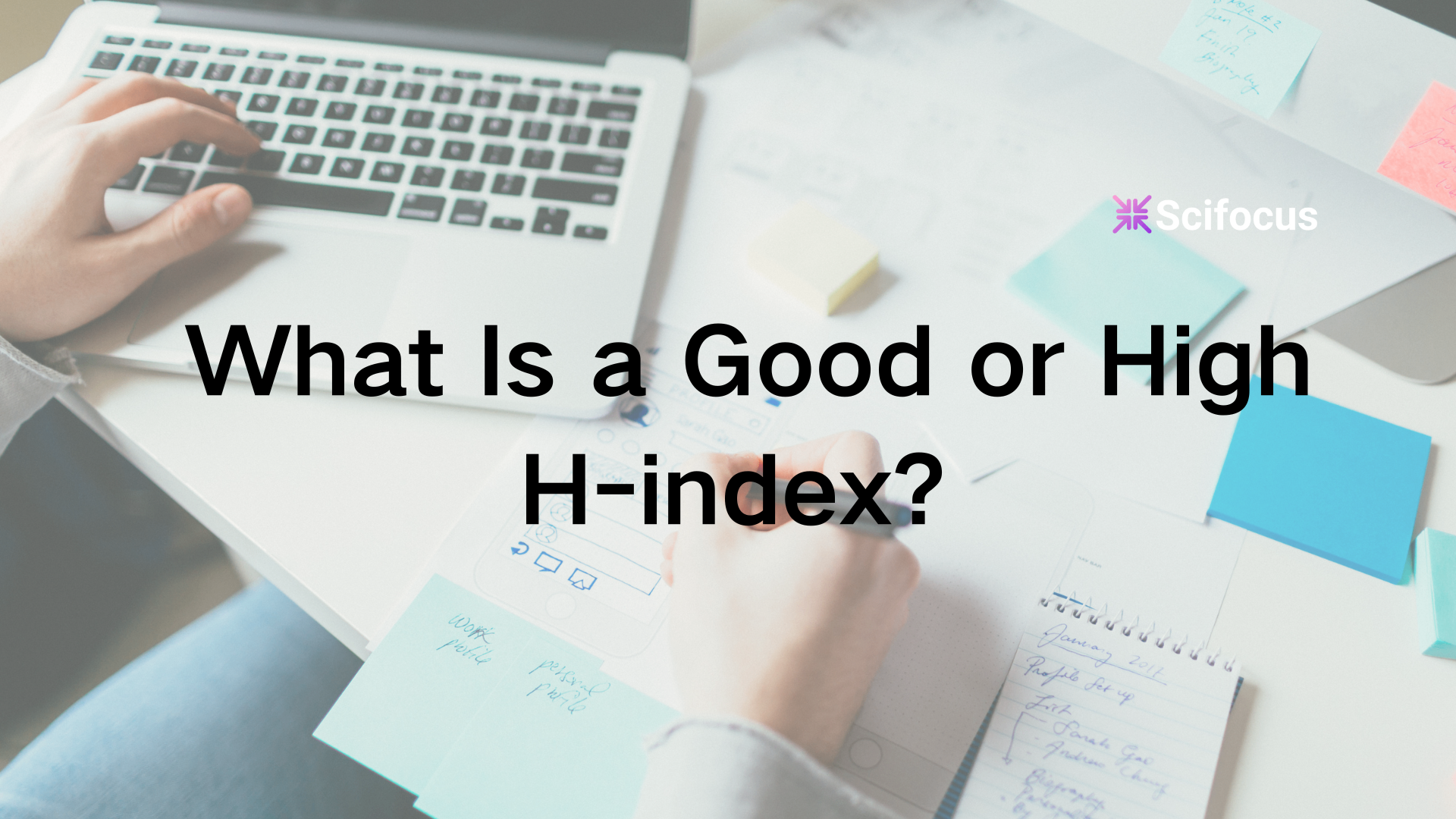What Is a Good or High H-index? Understanding Research Impact

A good or high H-index isn’t defined by a single number — it depends on your field, experience, and research output. In general, early-career researchers with an H-index between 5 and 10 are performing well, while established scholars with 20 or more have strong academic influence. For leading scientists, an H-index above 40 or 60 signals exceptional impact. However, context matters — publication norms differ across disciplines, meaning what’s considered “high” in physics may be average in biology or medicine.
Before we dive in, consider using Scifocus. It’s a real-time dashboard for tracking H-indices, comparing researchers, and visualizing citation trends, making it easier to understand your research impact.
What Is the H-index? A Simple Explanation
The H-index meaning is straightforward: it represents the number of papers (H) with at least H citations each. For example, if you have 20 papers and 10 of them have 10 or more citations, your H-index is 10.
Unlike simple publication counts or total citations, the H-index balances quantity and impact. Proposed by physicist Jorge Hirsch in 2005, it quickly became a standard metric in academia. Tools like Google Scholar, Scopus, and Web of Science calculate it differently, but the concept is consistent.
Why the H-index Matters for Students and Researchers
You might think, “I’m just starting my PhD—does it matter yet?” Yes, but context is key. The H-index helps track your academic influence over time. Early-career researchers naturally have lower H-indices because citations take time to accumulate.
What Counts as a Good or High H-index?
Here’s the catch: a “good” H-index depends on field and career stage. Typical benchmarks:
| Career Stage | Typical H-index |
|---|---|
| Graduate students | 1–5 |
| Early-career researchers | 10–20 |
| Established professors | 30–60+ |
| World-class scientists | 100+ |
Fields like medicine and life sciences generally see higher H-indices. Humanities scholars often have lower numbers—but that doesn’t mean less impact. Think of it as comparing marathon times in different climates; context matters.
How to Interpret a High H-index
A high H-index is impressive, but it’s not the whole story. Consider:
- Citations may not always indicate quality.
- Collaboration patterns can influence the H-index.
- A few highly cited papers can skew total citations without increasing H-index.
Metrics like i10-index and g-index provide additional context. The H-index is a snapshot, not a definitive measure of your academic worth.
Where to Check Your H-index
Google Scholar H-index
Broad, includes most publications, but can inflate numbers with non-peer-reviewed sources.
Scopus H-index
Curated database, more standardized, ideal for cross-disciplinary comparisons.
Web of Science H-index
Highly selective, excellent for rigorous comparison.
Scifocus aggregates these platforms, showing trends, benchmarks, and comparisons without manual effort.
How to Improve Your H-index
Increasing your H-index takes strategy, patience, and consistency:
- Publish high-quality papers in reputable journals.
- Collaborate internationally for broader visibility.
- Promote your research on academic social platforms like ResearchGate or X (formerly Twitter).
- Be patient; citations accumulate over time.
Think of it as planting seeds: your work gains recognition steadily, and over years, your H-index grows naturally.
Emotional Considerations — Don’t Stress the Numbers
Seeing a lower H-index than peers can be disheartening. But the H-index reflects influence, not worth. Early-career researchers should focus on skill development, collaborations, and meaningful publications rather than obsessing over numbers.
Scifocus can reduce anxiety by visualizing growth and providing context for your H-index, making it a motivating tool instead of a source of stress.
Comparing H-index Across Fields
Citation patterns differ by discipline:
- Life sciences & medicine: higher citation norms
- Engineering & physics: moderate citation rates
- Humanities & social sciences: lower, but still impactful
Direct comparisons across fields are misleading. Focus on relative H-index within your discipline. Scifocus lets you filter by field for meaningful benchmarking.
Famous Researchers and Outliers
Some researchers have H-indices exceeding 100, including Nobel laureates and prolific scientists. While inspiring, chasing extreme H-indices isn’t practical for students. Focus instead on consistent publications, collaborations, and impact.
Key Takeaways
- The H-index measures productivity and impact.
- “Good” or “high” H-index depends on field and career stage.
- Use the H-index as a tool, not a verdict.
- Compare within disciplines, not across them.
- Scifocus is the ideal platform to track, visualize, and interpret your H-index effectively.
FAQs
1. What does H-index actually measure?
It measures the number of papers (H) with at least H citations each, reflecting productivity and research impact.
2. What’s a good H-index for a PhD student?
Typically 1–5, depending on your field.
3. Who has the highest H-index in the world?
Top researchers in life sciences, medicine, and physics often exceed 100.
4. How does Google Scholar H-index differ from Scopus H-index?
Google Scholar includes more sources; Scopus is curated and standardized.
5. How can I increase my H-index effectively?
Focus on high-quality publications, strategic collaborations, research promotion, and patience.
Did you like this article? Explore a few more related posts.
Start Your Research Journey With Scifocus Today
Create your free Scifocus account today and take your research to the next level. Experience the difference firsthand—your journey to academic excellence starts here.
